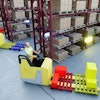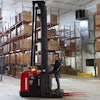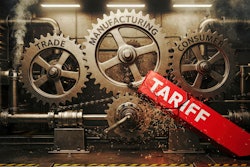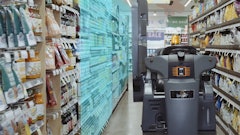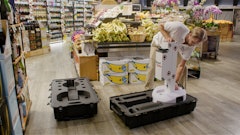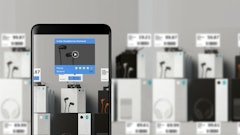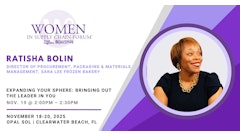
The UK’s food and beverage (F&B) sector is one of the fastest paced and heavily regulated. Yet 69% of producers still rely on legacy tools like spreadsheets and outdated enterprise systems to manage key functions like manufacturing, inventory, and compliance.
This reliance on old tech isn’t just inefficient, it’s risky. It increases exposure to food safety breaches, operational delays, and expensive product recalls.
But there’s a better way forward. Modern, industry-specific ERP systems are helping F&B companies simplify operations, comply with regulations like Natasha’s Law, and achieve end-to-end supply chain traceability.
The cost of clinging to legacy tech
F&B firms have complex operational processes, which, without the right system, can result in multiple underlying issues. Many companies continue to use spreadsheets, homegrown databases, or general legacy systems that were not meant for the fast-paced, high-stakes nature of food production.
These outdated tools cause various pain points:
• Manual data entry and duplication: Repetitive manual data entry can lead to errors and inefficiencies across several systems.
• Limited traceability: Legacy systems lack end-to-end batch tracking, hindering traceability and response to recalls.
• Lack of real-time visibility: Simultaneous or delayed inventory, sales, and production data might lead to a lack of real-time insight for decision-makers.
• Compliance headaches: Older systems may not fulfil today's food safety regulations for documentation and audit trails, causing compliance issues.
A recent survey from New Food Magazine reinforces these worries, indicating that 60% of F&B organizations are still "stuck in implementation," unable to complete digital transformations due to complexity, resource restrictions, and ill-suited technology.
5 ways F&B ERPs transform manufacturing and distribution
1. Raw material sourcing and inventory
F&B ERP systems provide customized inventory management for food and beverage organizations. They offer capabilities like automated purchasing and stock-level monitoring.
It enables companies to track expiry dates using first-expired/first-out (FEFO) logic and offers effective supplier and quality-control management, including lot tracking and compliance documentation.
2. Batch and recipe management
ERPs assist producers in maintaining consistency and quality by providing precise control over recipes, allergies, and ingredients. Key capabilities include the ability to optimize batch scheduling, control recipe variations, and monitor allergies and nutrition.
3. Production planning and scheduling
Real-time scheduling optimizes manpower and equipment utilization while avoiding downtime and overproduction. ERP solutions enable forward-looking production plans, multi-location synchronization, and continuous waste and yield monitoring.
4. Traceability and recall management
In the event of contamination or a product recall, traceability is essential for food and beverage companies. Modern ERP systems provide full insight throughout the supply chain, from raw ingredient intake to final product delivery. Automated lot and batch tracking, traceability from supplier to retailer, and real-time recall management systems are among the core characteristics.
5. Distribution and logistics
ERP systems simplify order fulfilment, transportation planning, and third-party logistics (3PL) integration by combining critical logistical activities into a single system.
These capabilities include route optimization to improve delivery efficiency, order-to-cash automation for faster and more accurate invoicing, and temperature control tracking to ensure compliance and product quality during transportation.
Meeting modern regulatory demands: Natasha’s Law and beyond
Regulations in the UK food and beverage industry have become more stringent, particularly in terms of labelling and allergy information. Natasha's Law, which went into effect in October 2021, requires complete ingredient and allergen labelling on all pre-packaged for direct sale (PPDS) foods, highlighting the critical need for precise and automated compliance technologies.
An industry-specific F&B ERP offers:
• Automated allergen labeling ensuring ingredient lists are constantly up to date
• Audit trail readiness for FSA inspections
• Digital document control linking quality certificates, safety documentation, and test data to each product batch
In July 2023, Trading Standards in Devon and Somerset discovered that 56% of companies violated Natasha's Law.
Of the 56 failed samples, 34 had undeclared allergens, with milk accounting for the majority (44%). These findings highlight the long-term hazards to consumer health and the crucial need for correct allergen labelling, as well as the potential legal and health ramifications of noncompliance.
What today’s F&B companies need in an ERP
The most successful food manufacturers and distributors routinely choose ERP solutions that meet their operational and regulatory requirements. With an ERP in place, businesses can reduce finished goods inventory by 25%, reduce time spent picking and packing by 10%, and increase delivery times by 14%.
It’s important to know what ERP solutions are available and if they match the requirements of food and beverage manufacturers, like:
• Cloud-based and modular: Cloud-based systems allow for quick deployment, automatic updates, and easy scaling without requiring a significant in-house IT workforce.
• Intended for food and beverage: Purpose-built ERPs offer industry-specific features like allergy tracking, yield calculations, and traceability, which generic systems frequently ignore.
• Easily integrateable: The seamless integration with e-commerce platforms, accounting tools and logistics software results in a linked, data-driven environment.
• Mobile-enabled: ERP access via tablets and mobile devices provides warehouse teams, delivery drivers, and field agents with real-time data and task management capabilities.
• Compliant and audit-ready: Built-in capabilities such as document management, traceability logs, and allergen control assist firms in meeting UK food safety regulations and remaining ready for inspection.
Practical tips for successful F&B ERP implementation
While many food and beverage businesses want to modernize, they frequently get stuck in the implementation phase. Complexity, inadequate vendor support, and unrealistic deadlines can all wreck projects.
Here are six practical ways to ensure a seamless ERP implementation:
- Select an ERP with a proven food focus: Do not settle for "one-size-fits-all" platforms. Choose a vendor that has food and beverage case studies from the United Kingdom. This ensures appropriate functionality and expedites onboarding.
- Start with core modules: Start with must-haves like inventory, batch tracking, and traceability to avoid "scope creep". Later on, you can add more complex modules (such as AI predicting or mobile scanning).
- Involve cross-functional teams: Engage the production, compliance, finance, and IT departments from the beginning. Their input prevents misalignment and promotes acceptance.
- Use cloud for faster deployment: Cloud-based ERP systems have shorter setup timeframes and lower upfront infrastructure costs than traditional on-premise solutions, making them an attractive option for firms looking to modernize quickly.
- Identify implementation partners with food expertise: Look for implementation consultants with food and beverage experience. UK-based partners who are familiar with BRCGS standards, Natasha's Law, and chilled logistics will have a greater understanding of your business than generic IT vendors.
- Run parallel systems: Reduce risk by running your old and new systems concurrently during the changeover. This boosts staff trust and allows for issue resolution without disrupting operations.
